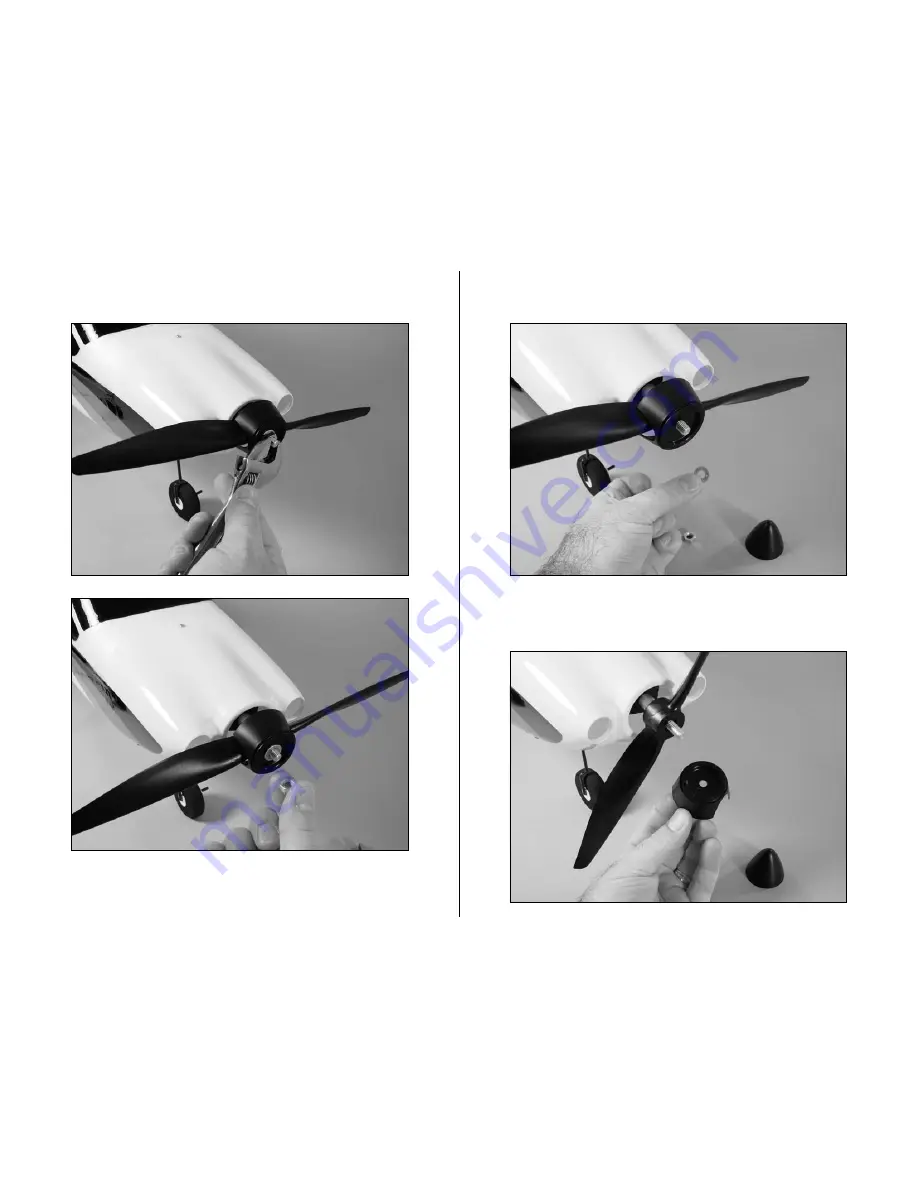
18
E-flite Apprentice Assembly Manual
2. Use an adjustable wrench to remove the nut from the
propeller adapter. Set the nut aside so it does not get lost.
3. Remove the washer and set it aside with the nut and
spinner cone.
4. Remove the spinner backplate and set it with the nut,
spinner cone and washer.
















































